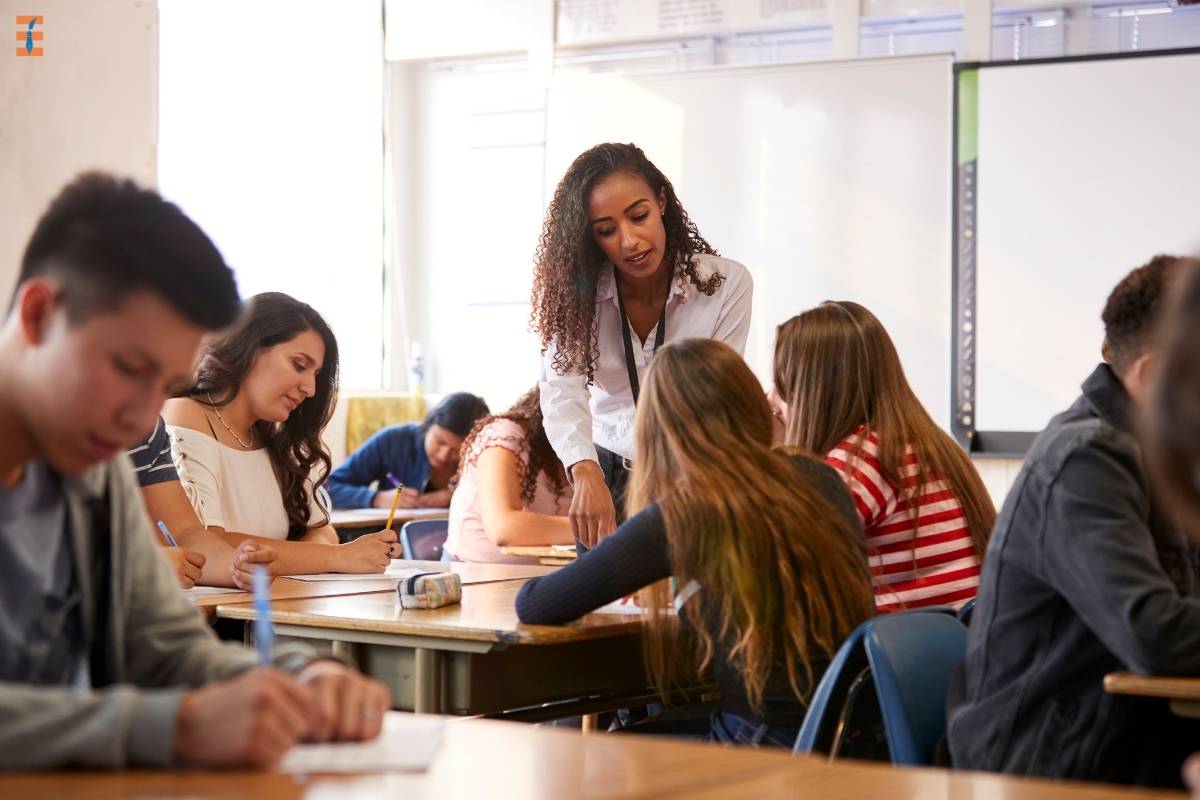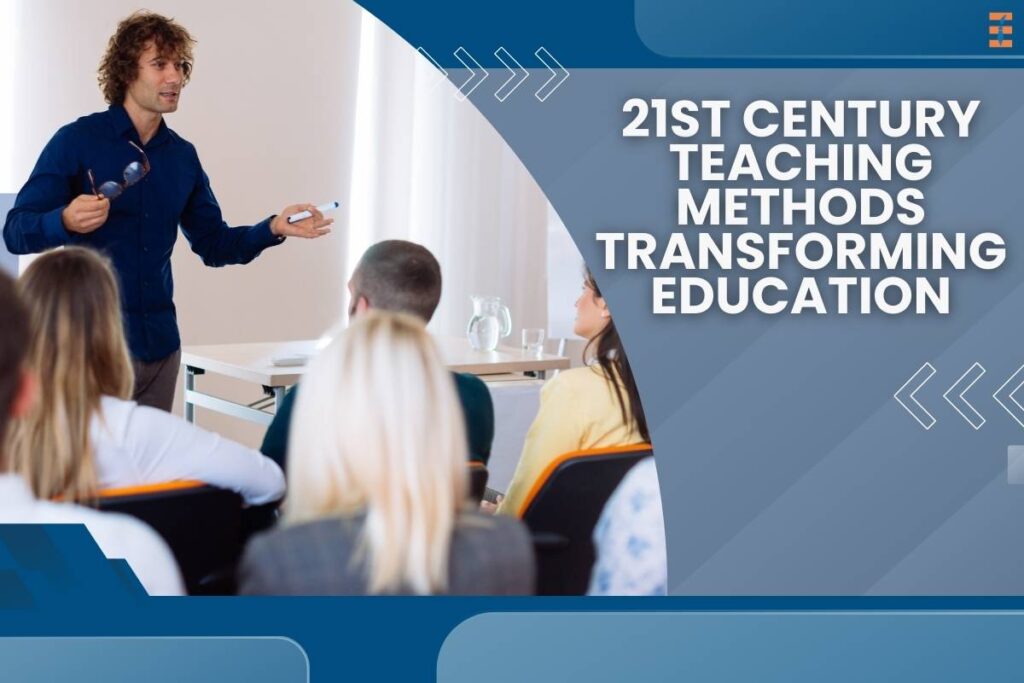In the dynamic landscape of the 21st century, education stands at the forefront of evolution. Traditional teaching methods, once considered pillars of academia, are giving way to innovative approaches that align with the demands of a rapidly changing world. This article explores the paradigm shift in education, delving into the key elements of 21st Century Teaching Methods, their impact on student learning, and the role of technology in shaping the classrooms of the future.
Embracing Student-Centric Learning:
1. Personalized Learning Journeys
One of the hallmark features of 21st Century Teaching Methods is the emphasis on personalized learning. Recognizing that each student has unique strengths, preferences, and paces of learning, educators are adopting strategies that cater to individual needs. Whether through differentiated instruction, project-based learning, or adaptive technologies, the goal is to create an environment where students can navigate their own educational journeys.
2. Cultivating Critical Thinking
Beyond rote memorization, 21st Century Teaching Methods prioritize the development of critical thinking skills. Students are encouraged to analyze, evaluate, and synthesize information, fostering a deeper understanding of concepts. Inquiry-based learning and problem-solving activities become integral components, empowering students to approach challenges with creativity and analytical prowess.
3. Collaboration and Communication
In a world interconnected by technology, collaboration, and effective communication are indispensable skills. 21st Century Teaching Methods prioritize group activities, peer learning, and digital platforms that facilitate communication. By engaging in collaborative projects, students not only deepen their understanding of subjects but also develop crucial teamwork and communication skills essential for success in the modern workforce.
Integrating Technology in the Classroom:
1. Interactive Digital Platforms
Technology catalyzes the transformation of teaching methods. Interactive digital platforms, ranging from educational apps to virtual classrooms, provide avenues for immersive learning experiences. These platforms engage students through multimedia elements, gamified content, and real-time feedback, making the learning process more dynamic and appealing.
2. Blended Learning Environments

Blending traditional classroom instruction with online resources characterizes the 21st-century approach to learning. Blended learning environments leverage both face-to-face interactions and digital resources, allowing students to access content at their own pace. This flexibility accommodates diverse learning styles and provides opportunities for students to take ownership of their education.
3. Virtual Reality and Augmented Reality
The integration of virtual reality (VR) and augmented reality (AR) has opened new frontiers in education. These immersive technologies transport students to virtual worlds, providing hands-on experiences that were once limited to textbooks. From virtual field trips to interactive simulations, VR and AR enhance the educational landscape, making abstract concepts tangible and fostering a deeper connection to learning.
Fostering a Growth Mindset:
1. Embracing Failure as a Learning Opportunity
21st Century Teaching Methods emphasize the importance of cultivating a growth mindset. Students are encouraged to view challenges and failures not as setbacks but as opportunities for learning and improvement. This shift in perspective fosters resilience, perseverance, and a willingness to take risks – qualities essential for navigating the complexities of the modern world.
2. Continuous Feedback and Assessment
Traditional grading systems are evolving into continuous feedback loops. Rather than focusing solely on end-of-term assessments, educators provide ongoing feedback that guides students in real-time. This approach not only allows for immediate course corrections but also instills a sense of continuous improvement and a commitment to lifelong learning.
3. Student Empowerment
Empowering students to take an active role in their learning journey is a central tenet of 21st Century Teaching Methods. From setting goals to choosing projects aligned with their interests, students are encouraged to be co-creators of their educational experience. This autonomy not only enhances motivation but also instills a sense of responsibility for one’s own learning.
Global Citizenship and Cultural Competence:
1. Cultivating a Global Perspective
In an era of global connectivity, 21st Century Teaching Methods aim to cultivate global citizenship. Beyond national borders, students are exposed to diverse perspectives, cultures, and global challenges. Virtual collaborations with students from different parts of the world, cultural exchange programs, and global awareness initiatives contribute to the development of well-rounded, globally conscious individuals.
2. Integration of Multicultural Content

Curricula are evolving to include a more diverse and multicultural range of content. Literature, history, and social studies now encompass narratives and perspectives from around the world. This intentional inclusion fosters cultural competence, empathy, and a broader understanding of the interconnectedness of global issues.
3. Service Learning and Social Responsibility
21st-century education emphasizes the importance of service learning and social responsibility. Students are encouraged to apply their skills and knowledge to address real-world problems within their communities and beyond. Engaging in service projects not only instills a sense of civic duty but also provides practical application of academic concepts in a meaningful context.
Professional Development for Educators:
1. Lifelong Learning for Teachers
Just as students are encouraged to embrace lifelong learning, educators are also expected to continually enhance their skills and adapt to evolving educational trends. Professional development opportunities, workshops, and collaborative learning communities support teachers in staying abreast of innovative teaching methods, incorporating technology, and refining their pedagogical approaches.
2. Collaboration Among Educators
Collaboration is a cornerstone of effective teaching in the 21st century. Educators collaborate within and across disciplines, share best practices, and engage in collaborative projects that enrich the learning experience for students. The collaborative ethos extends to the sharing of resources, lesson plans, and innovative teaching strategies through online platforms and professional learning networks.
3. Embracing Innovative Teaching Strategies
To meet the demands of 21st-century learners, educators are encouraged to embrace innovative teaching strategies. This includes incorporating technology, designing interactive lessons, and adapting content to cater to diverse learning styles. The focus is on creating dynamic and engaging learning environments that inspire curiosity and a passion for learning.
Overcoming Challenges in Implementation:
1. Technological Infrastructure
While technology plays a pivotal role in 21st Century Teaching Methods, challenges arise in ensuring equitable access to digital resources. Addressing issues related to technological infrastructure, providing devices for students, and bridging the digital divide are crucial steps in creating an inclusive educational environment.
2. Resistance to Change

The transition from traditional to innovative teaching methods may encounter resistance from various stakeholders, including educators, parents, and policymakers. Overcoming this resistance involves fostering a shared understanding of the benefits of 21st-century education, providing professional development, and showcasing successful implementation models.
3. Assessment and Accountability
21st Century Teaching Methods often challenge traditional modes of assessment and accountability. As education moves towards a more holistic evaluation of student progress, reevaluating assessment practices and aligning them with the goals of personalized, student-centric learning becomes essential.
Conclusion: Charting the Course for Future Education:
In the unfolding narrative of 21st Century Teaching Methods, innovative teaching methods are steering the course toward a future where learning is dynamic, inclusive, and empowering. The shift towards student-centric, technology-integrated, and globally aware approaches reflects a commitment to preparing individuals for the challenges and opportunities of the modern world.
As educators, students, and institutions collaborate in this transformative journey, the classroom becomes a nexus of exploration, curiosity, and continuous growth. 21st Century Teaching Methods are not just about imparting knowledge; they are about nurturing the skills, attitudes, and perspectives that empower learners to navigate the complexities of the 21st century with confidence and resilience.
Also Read: The Alchemical Transformation of Your Math Classroom into a Thinking Classroom

